Excerpts from Jim Conrad's
Naturalist Newsletter
entry from field notes dated April 15, 2022, taken in disturbed/reforesting borderline cloudforest within 1km of Valle de los Fantasmas, elevation ±2,320m (7600 ft), with limestone bedrock; about 40kms (24 miles), straight-line, ESE of San Luis Potosí, San Luis Potosí state, MÉXICO, (N22.06°, W100.62°)
ROLDANA LOBATA
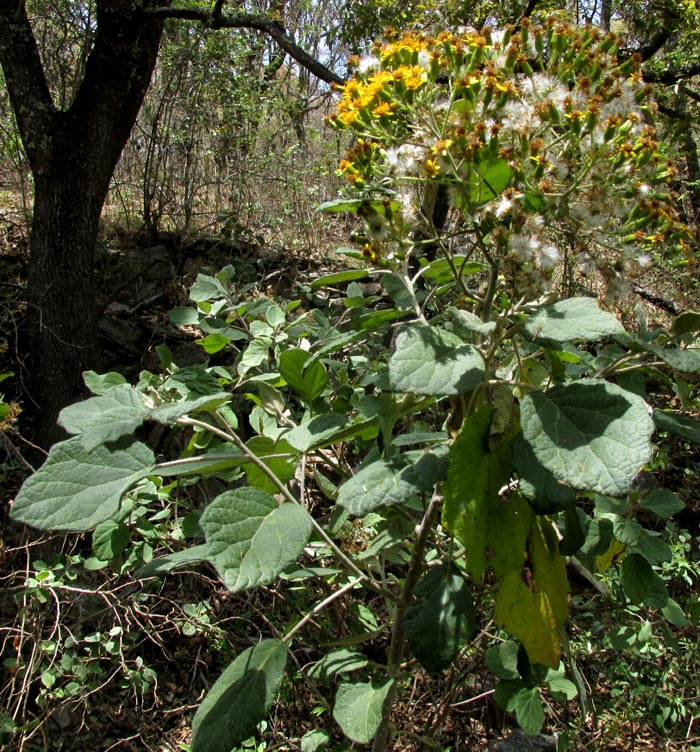
At the end of the dry season, standing in a deep carpet of dry-crispy tree leaves blown into the bottom a shallow sinkhole, there was a 2 meter tall (6.6ft), semi-woody bush, its big cluster of flowers and roundish leaves on long, stiff petioles, as shown above. Up close, the flowers left no doubt which plant family they belonged to:
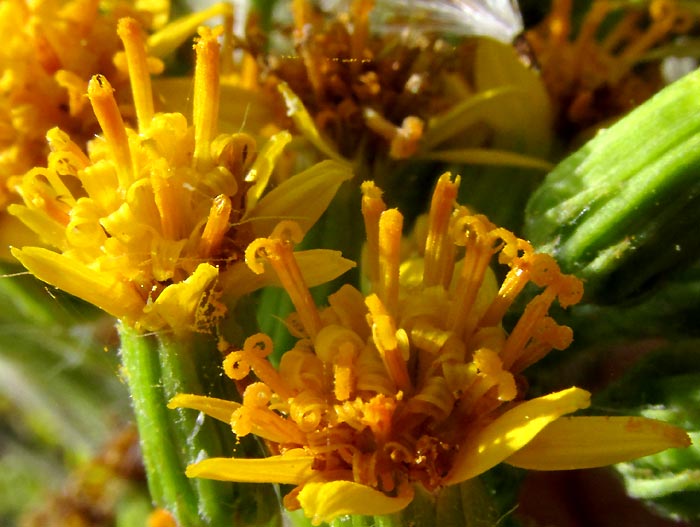
Flat disc floret corollas looking like a regular flower's petals, surrounding crammed-together, cylindrical disc florets means the gigantic Composite or Aster Family, the Asteraceae. A side view of the flower clusters, or capitula, leads us to the tribe within family:
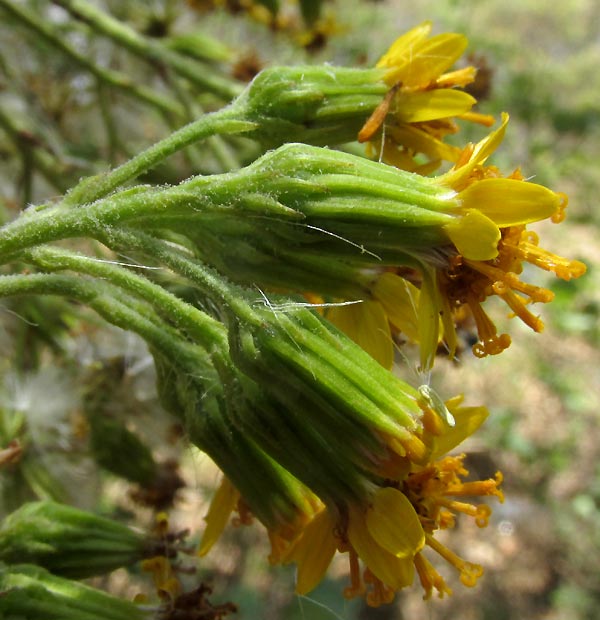
The green, urn-shaped features below the clusters of yellow corollas, holding the florets in a capitulum, are involucres. Involucres are composed of scale-like bracts, which are modified leaves. Normally involucral bracts are arranged in two or more series and overlap one another like shingles on a roof. The above bracts, however, are side by side, are of more or less equal length, and occur in just one main series. This suggests the largest tribe of the Composite Family, comprising nearly a third of all the family's species, the tribe Senecioneae.
Another good field mark of the Senecioneae Tribe is that in each capitulum, between the florets, there are no papery, scale like things partly wrapping around the flower, called paleae, as shown below.
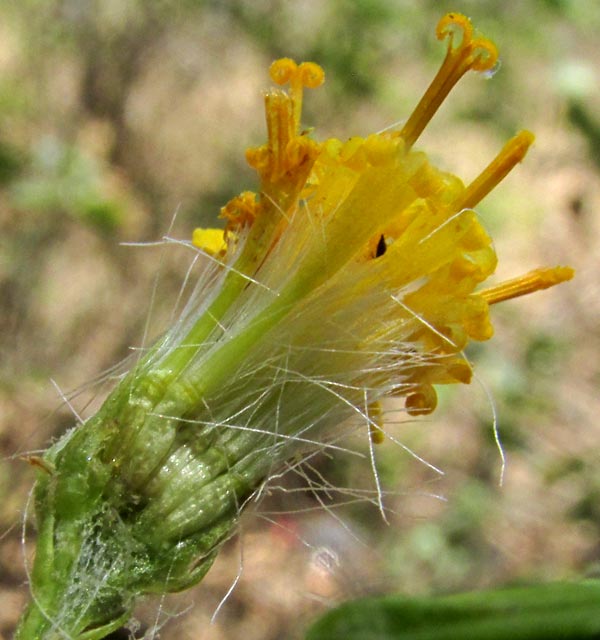
In the above picture the white hairs atop each ribbed, cigar-shaped item below each floret, the ovaries, comprise the pappus. When the ovaries mature into one-seeded, cypsela-type fruits, the pappus will become the "parachute" atop each cypsela, shown below:

Students of wildflowers in the Temperate Zone visualize members of the Composite Family as overwhelmingly herbaceous, like asters, goldenrods and dandelions. However, especially in the tropics, woody and semiwoody bushes and small trees become more common, and this is what we have here. This particular species distinguishes itself further by bearing roundish leaves on stiff petioles, the leaves' margins being only slightly lobed in a somewhat random manner, as shown below.

That picture shows another important field mark, which is that the leaves are hairy, with leaf undersurfaces and the petioles being so woolly hairy that they're white. The nature of that hairiness is shown below, on the underside of a leaf:
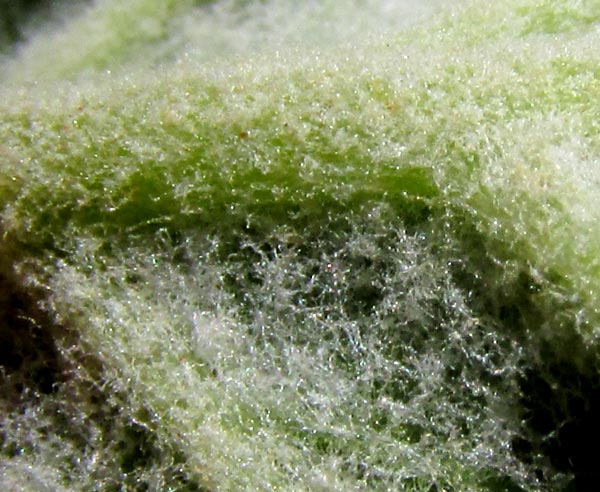
The above features led directly to the genus Roldana, whose species are native from the US arid southwest south through Mexico into Central America. It embraces about 50 species, of which only one occurs in the US, most of the others being Mexican. Fortunately, a 2001 paper by Michele Funston "Taxonomic Revision of Roldana (Asteraceae: Senecioneae), a Genus of the Southwestern U.S.A., Mexico, and Central America" was freely available online. Information and keys in that page led me to the species ROLDANA LOBATA, which has no English name.
Pictures on the Internet of Roldana lobata show leaves more deeply lobed than ours, and usually small leaves occur inside the big inflorescences, while no leaves are in our plant's inflorescence. However, Funston makes the point that this is a very variable species with certain regional variations, some of which have sometimes been described as separate species, but at this time it seems best just to call them all normal variations of Roldana lobata.
In Mexico Roldana lobata occurs from about here in San Luis Potosí state west to the Pacific and south to Oaxaca, plus it turns up in Guatemala as well.